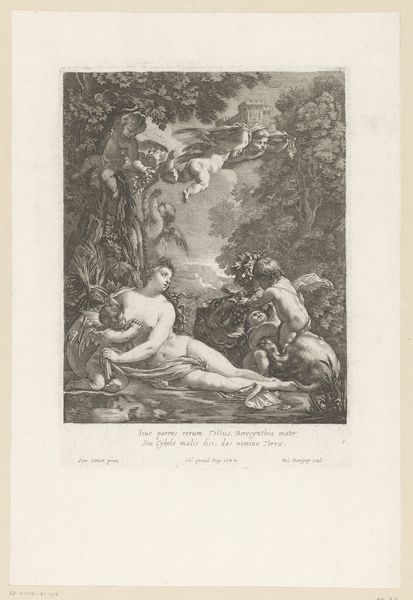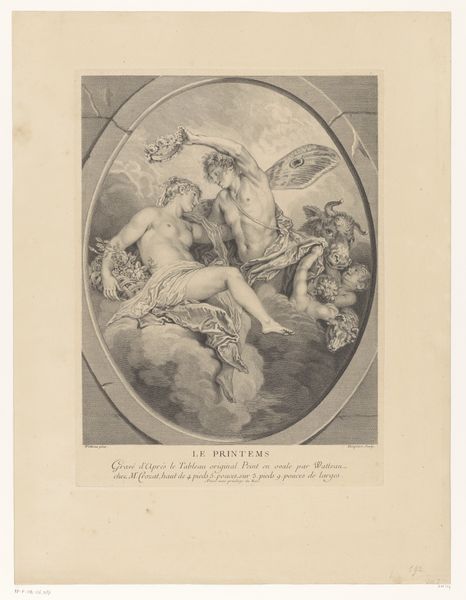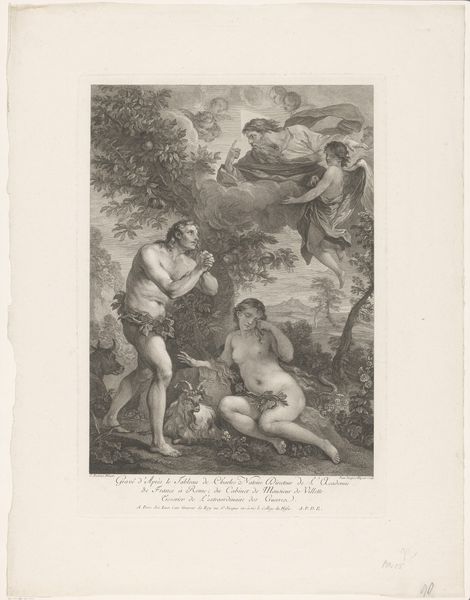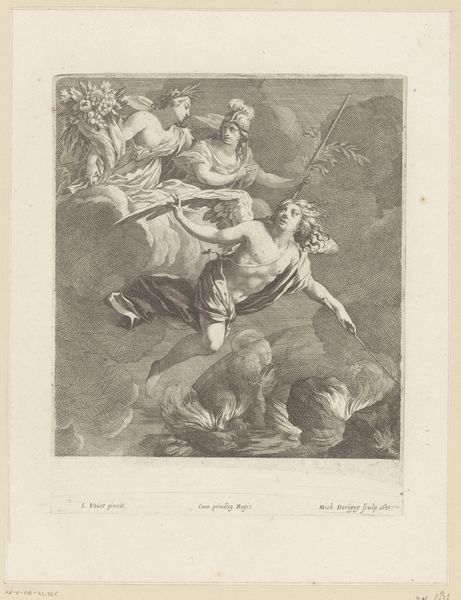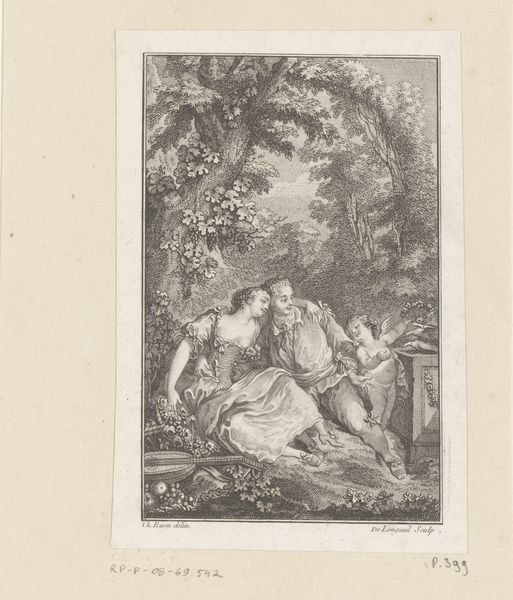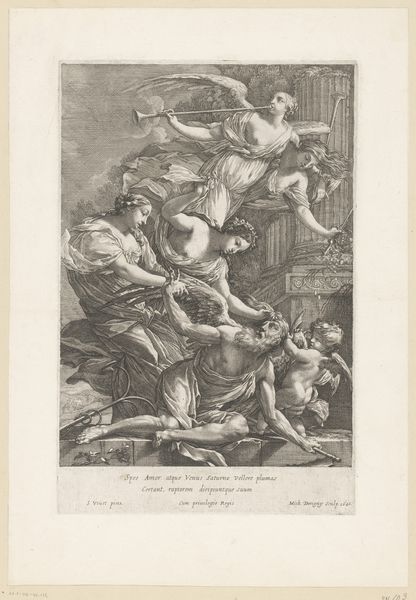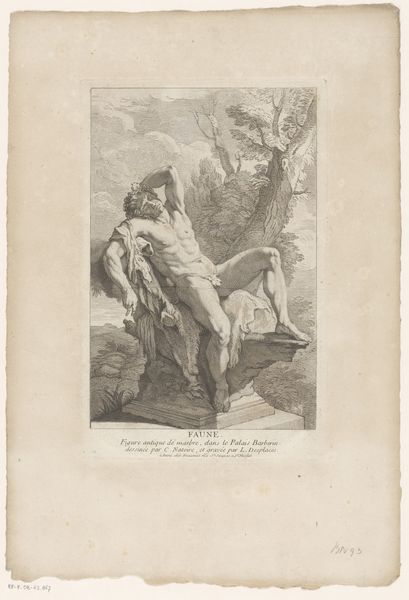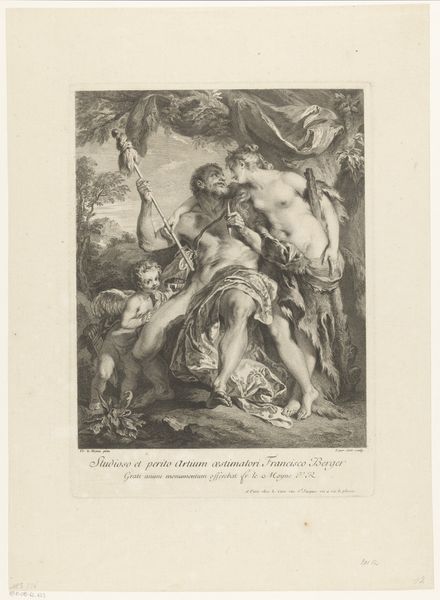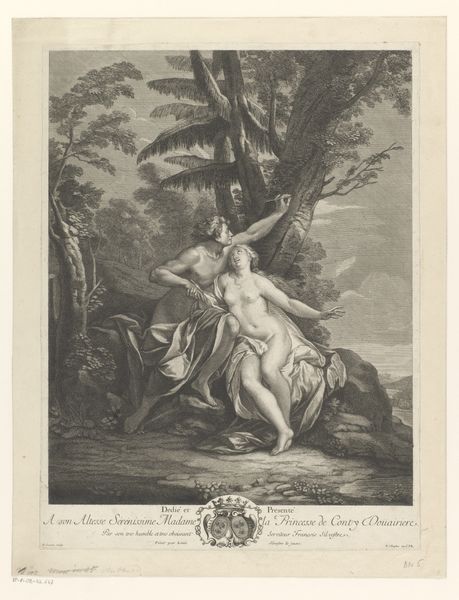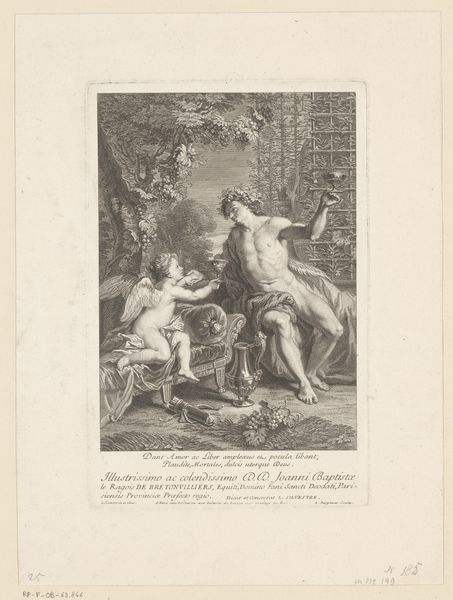
print, engraving
#
allegory
#
baroque
# print
#
old engraving style
#
figuration
#
history-painting
#
engraving
Dimensions: height 261 mm, width 204 mm
Copyright: Rijks Museum: Open Domain
Curator: This engraving from 1644, "Bacchus and Ariadne," comes to us from the hand of Michel Dorigny, a significant figure in the French Baroque printmaking scene. The technique employed, a precise engraving, invites us to closely examine the interplay of light and shadow, revealing a dramatic narrative moment. What strikes you first about this image? Editor: The raw emotion jumps out. There's a swirling, almost frenzied energy in the composition. Ariadne appears caught between fear and longing. It speaks of a pivotal moment of transformation. Curator: Indeed. Dorigny has chosen a fascinating moment—Ariadne, abandoned by Theseus, is discovered by Bacchus. It’s ripe with symbolic potential, particularly regarding the themes of abandonment, rescue, and transformation, echoed across diverse eras of history painting. Editor: Absolutely. And Bacchus! His appearance here isn't just a rescue. In terms of the history of imagery, this reflects the enduring narrative of powerful figures who save, who change the course for others and as well the constant fascination with Greek mythology within 17th-century France. Curator: Precisely. We must also recall the power of engraving during the era, allowing dissemination to the broader public and informing perceptions of the mythological canon. The symbolism is complex, layering themes of love, divine intervention, and the cyclical nature of fate. The transformation extends to Ariadne who ultimately attains immortality by marrying Bacchus, which is powerfully visualized through gesture and expression. Editor: And in this way, art does so much more than illustrate ancient stories: it invites an audience to meditate upon our very real anxieties related to love, security and eternal meaning, within systems of class and belief that shape power relations and the very conditions under which humans may achieve "happiness." Curator: A resonant point. Art serves both as a historical record and an invitation for self-reflection through mythic metaphor, offering multiple points of view across generations. Editor: In a manner which continues to inspire questions today, no doubt. Thank you. Curator: A perfect thought to carry onwards.
Comments
No comments
Be the first to comment and join the conversation on the ultimate creative platform.


